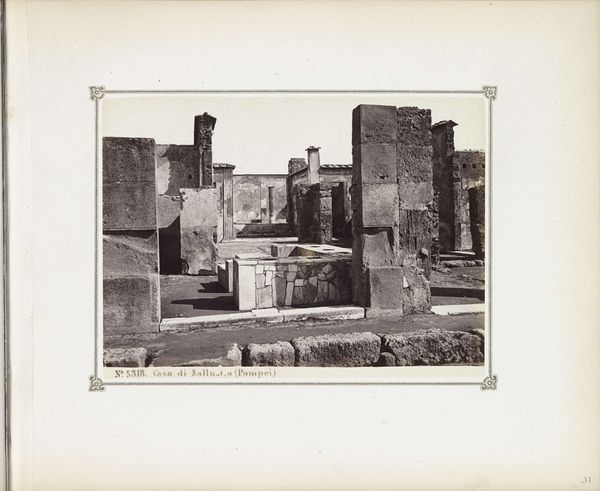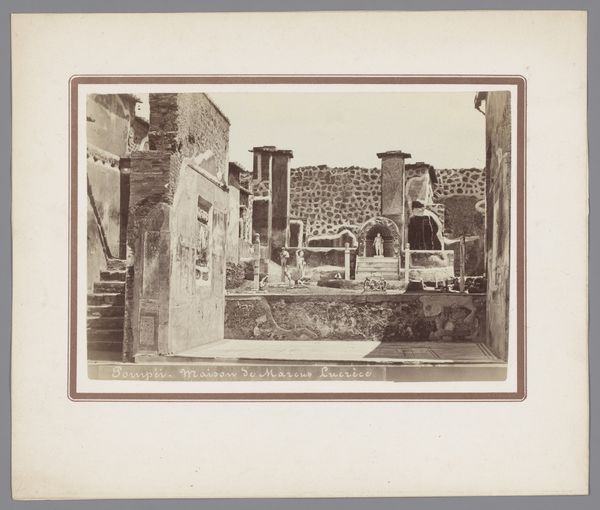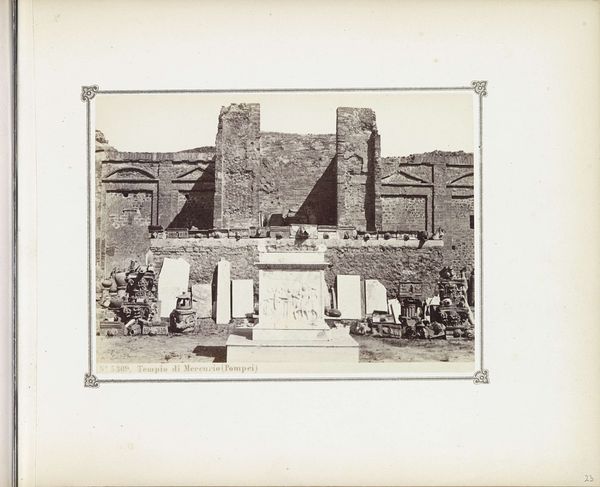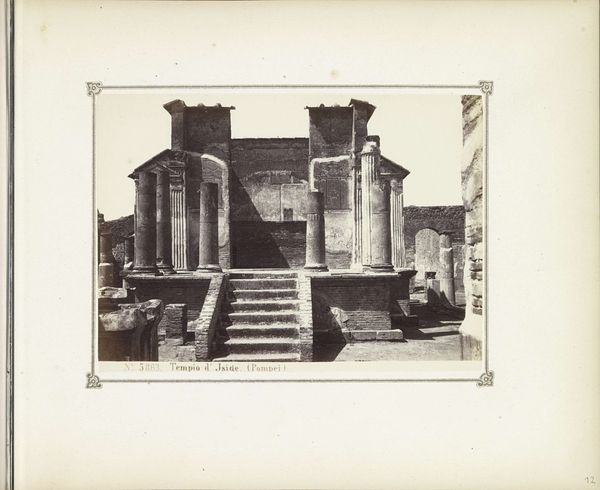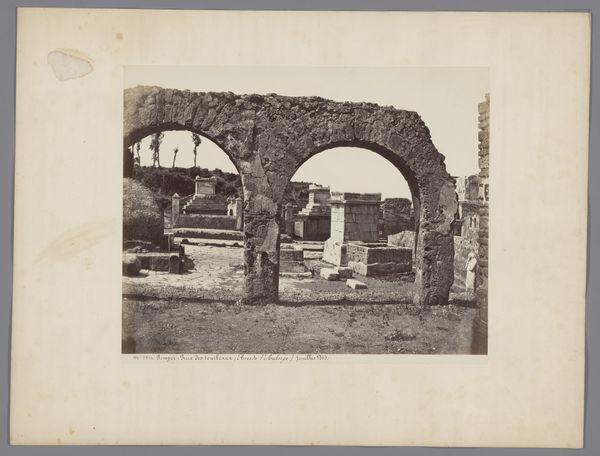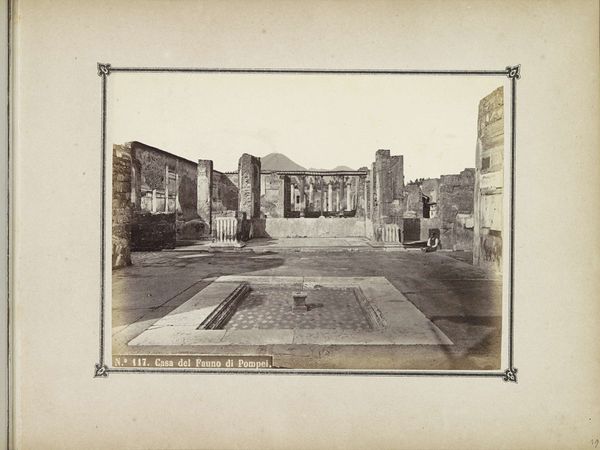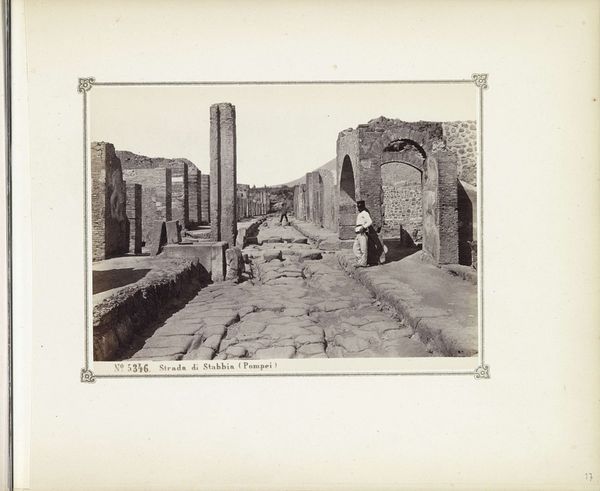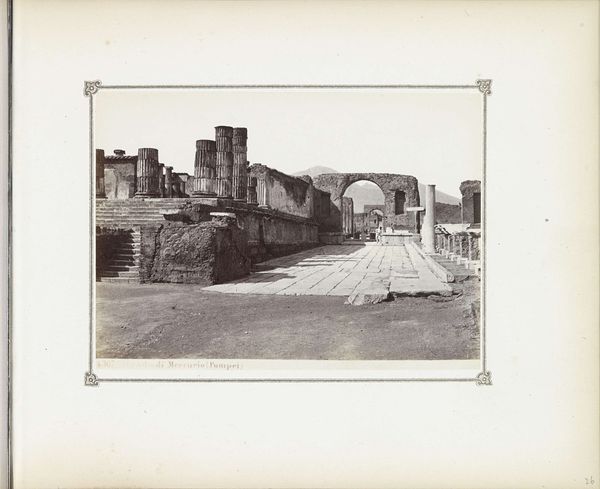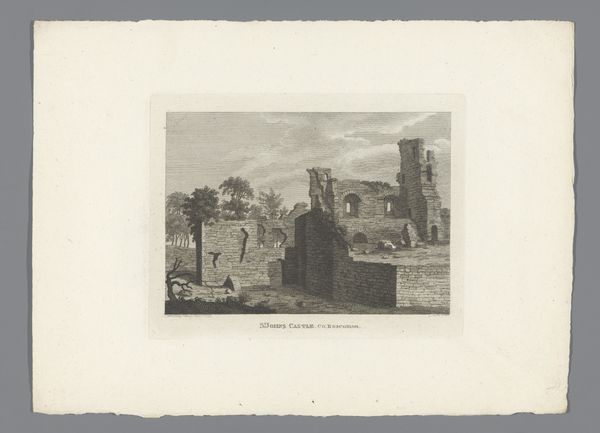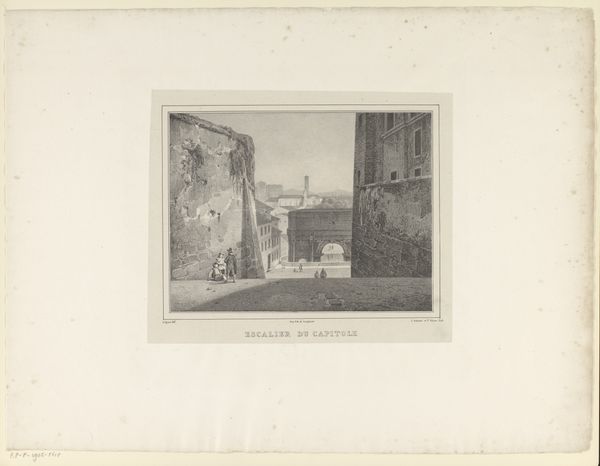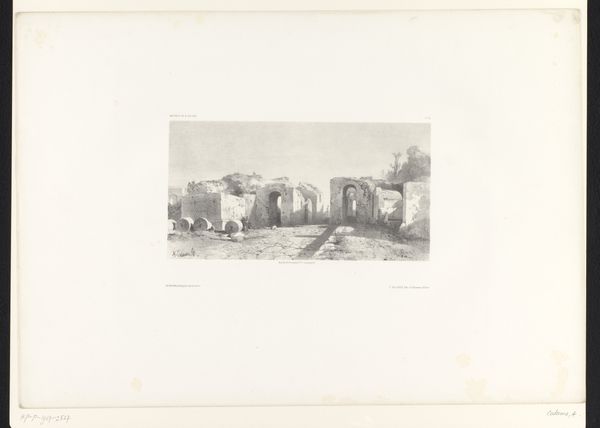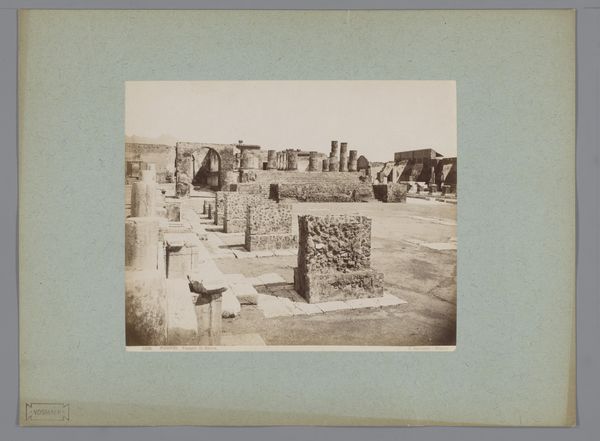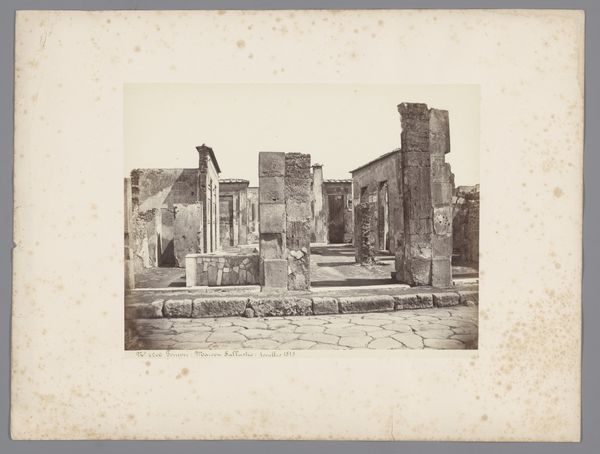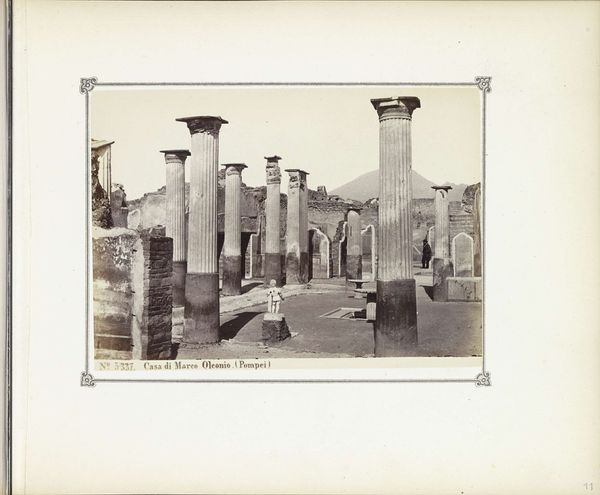
photography, albumen-print
#
aged paper
#
landscape
#
photography
#
ancient-mediterranean
#
19th century
#
cityscape
#
history-painting
#
albumen-print
#
realism
Dimensions: height 103 mm, width 140 mm
Copyright: Rijks Museum: Open Domain
Curator: Let’s turn our attention to this intriguing albumen print by Giorgio Sommer, taken sometime between 1860 and 1900. It depicts the remnants of the House of Marco Lucrezio in Pompeii. Editor: The monochrome palette certainly amplifies the desolation, doesn't it? The light catches the ruined stonework so dramatically. Curator: Indeed. Sommer, working primarily in Italy, made quite a career documenting archaeological sites. The albumen process itself—using egg whites to bind the photographic chemicals—is fascinating, creating these uniquely toned and textured prints. It makes one consider the labor invested in these images, doesn't it? Editor: Absolutely, and the composition! Notice how the surviving statuary in the courtyard commands our gaze, drawing us into a deeper contemplation on history, power, and legacy through their forms. The contrasts are stark, almost theatrical, reinforcing a sense of timelessness through ruined geometry. Curator: And the social context! Imagine Sommer and his team meticulously setting up their equipment amidst the excavations, catering to a growing Victorian fascination with antiquity, using photography to capture what was essentially a visual commodity for tourists eager to experience "authentic" history through this relatively new medium. Editor: I appreciate that context, but can we return to the visual language here? How Sommer skillfully uses light and shadow to articulate depth within the limited grayscale. It’s more than a simple document; the visual drama creates such pathos. Curator: Sommer clearly was attempting to satisfy public appetite. It's fascinating how these archaeological records reflect a culture's self-image and aspirations; not unlike many historical landscape paintings. The photograph offered 'accurate' glimpses that painters could not. Editor: Even stripped bare, the image conveys the timeless human aspiration towards beauty and permanence, however futile. Curator: Exactly, by looking closely at these older photographic processes and how they captured their subjects, we get an entirely new, informed way of examining the artwork. Editor: A powerful image, especially knowing the hands that captured it, inviting ongoing contemplation about the echoes of grandeur amidst such tangible loss.
Comments
No comments
Be the first to comment and join the conversation on the ultimate creative platform.
